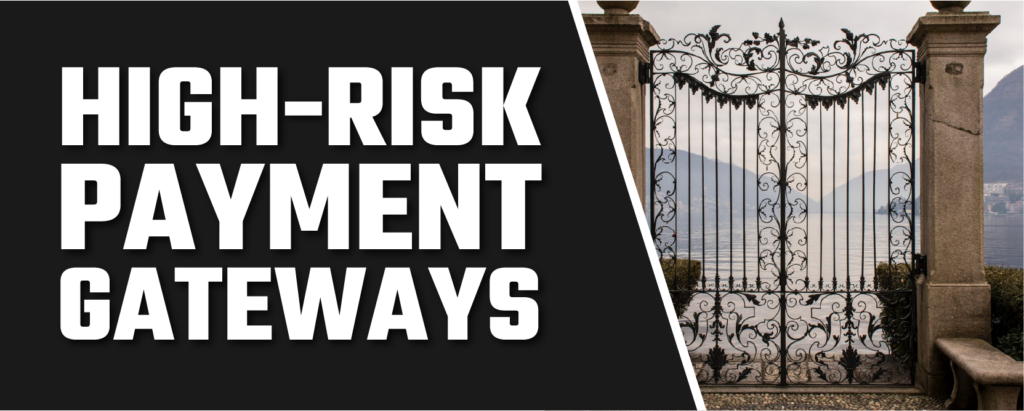Updated May 2024
How a Payment Gateway Works
Regardless of which industry you are in, your business needs to have a way for customers to pay for goods and services, and for you to receive the payment safely, securely, and in a timely manner. This means every business needs a merchant account and a payment gateway provider. At one time, paying for goods or services consisted of a customer handing a business proprietor a stipulated amount of cash, which would be placed in the drawer of a cash register, in a safe, or possibly in an old, empty cigar box if you were a nine-year-old kid selling paper cups of lemonade on the sidewalk in front of your house. Later, you might have physically carried the cash to your bank and deposited it in your account. It was a simple, straightforward, and inexpensive system that had very few things that could go wrong. Today, that's not the case as debit card transactions and credit card processing has become key to payment processing in every industry. That's why it is important to understand the role of high-risk payment gateways.
Times change, however, and payments today tend to consist of electrons zipping along wires more than a few coins placed in a cigar box. Payment processing involves debit and credit card payments, along with other means of payment in which there is no physical transfer of money from the customer to the merchant. Customers may not even have to take their credit cards out of their wallets. The system certainly has benefits, including convenience and the ability to make payments remotely, but it also adds more steps to the process, and more steps means a greater likelihood of something going wrong.
What is a High-risk Payment Gateway?
A payment gateway is a technological middleman between your business and your payment processor. It's a program that encrypts and transmits credit card data and other transaction information from a business' checkout to the payment processor. It is a critical component in ensuring secure and reliable online payment acceptance and transaction processing. A high-risk payment gateway is simply a payment gateway provided by a company that works with merchants who are considered to be high-risk. As with high-risk payment processors, there are even payment gateway providers that specialize in high-risk businesses.
Fortunately, finding a payment gateway is relatively easy once you have opened a high-risk merchant account with a high-risk payment processor. Because payment gateways only encrypt and transfer transaction data to the payment processor, they are subject to less risk than payment processors. There is still some risk involved, however, and not every gateway provider is willing to work with high-risk businesses. The good news is that, just as with payment processors, there are payment gateway providers that are set up to work with and handle the needs of high-risk merchants, sometimes as their specialty.
How Does a High-Risk Gateway Work?
First, You'll Select a High-risk Processor
A high-risk payment gateway has to be set up a bit differently than a low-risk gateway. That's because high-risk businesses face some additional challenges related to providing a way for customers to make payments. The most significant of these is the difficulty of obtaining a merchant account either at a traditional bank/financial institution or a payment processing company. If your business is considered by a bank to be high risk, you will at the very least have to undergo a lengthy application process that will likely have requirements that are more stringent than those used for applicants that are not high-risk businesses. Many payment processors, like traditional financial institutions, are very reluctant to take high-risk merchants as clients, so chances are good that your application will be rejected.
As we have discussed in other articles, this obstacle can be overcome by finding a payment processor that works with high-risk businesses. Such businesses are common enough now that it shouldn't be too difficult to find one. However, it's important that you find a payment processor that has the software, equipment, experience, and expertise needed to provide consistently trouble-free and reliable payment processing, as well as a solid track record of security.
( Matters related to the selection of high-risk payment processors are addressed in more detail in other articles, both in general and in the context of specific industries. See, for example, High-Risk Merchant List and Visa High Risk Merchants.)
Even if you have found a good high-risk payment processor, you still need a way to get the payment from your checkout to the payment processor's system. That way is a payment gateway. Some payment processing companies, like Zen Payments, also offer gateway solutions. Working with one company for all of your high-risk payment needs can help streamline the process and make payment processing more efficient for your company.
How a Gateway Works
At its core, a high-risk gateway works the same way gateways do for low-risk merchants. It is the third-party technology that allows credit or debit card transactions to be authenticated and then payment data securely transmitted to the other party. Typically, a gateway works by following these steps.
- When someone makes a credit card purchase, the information about the card and the cardholder is passed to the gateway, which checks for fraud. The gateway encrypts that information and sends it to the acquiring financial institution.
- The Acquiring bank then sends the information to the card scheme, whether that's Visa, Mastercard, American Express, or another company.
- The card scheme sends the transaction to the issuer to ensure the money is there for the payment and to get authorization. The issuer will send an approved or declined message from the card scheme to the acquiring institution.
- Once the transaction has been authorized, the acquirer lets the gateway know, and the gateway then passes the information back to the merchant. At this point, the transaction is either authorized or declined.
What Makes a High-Risk Gateway Merchant Account Different?
Unlike other payment gateway solutions, a high-risk business needs a payment gateway that can protect them from fraud, a high chargeback ratio, and other threats. A high-risk gateway should include controls and screening functions that identify possible risks to your business. Its platform should have filters that block transactions based on specific parameters, such as IP addresses and suspicion of scammers. Its system should be able to verify data and authenticate the identities of people attempting to use a credit card, run historical card database checks, mitigate chargebacks, etc.
Because of these additional services, high-risk gateways often function differently than a traditional one when working with the merchant. For example, they may take longer to approve your application or charge higher fees. For example, they may charge higher chargeback fees if the merchant's company has a high chargeback ratio.
Some also have requirements for a cash reserve. This is usually a rolling reserve and typically means they set aside up to 10% of every purchase until the period ends, at which point you'll receive the money set aside. Sometimes, they'll operate using a capped reserve (the reserve is capped at a certain number) or an up-front reserve, meaning the merchant has to provide the reserve money up-front.
Other Things to Look For in a High-Risk Gateway Merchant
Other things to look for are PCI compliance, the ability for you to collect your funds without undue delay, and support for diverse means of payment, such as mobile wallets, electronic checks, ACH transfers, major mobile payment solutions, or other payment options you want to use. Some payment gateways even support payments made with cryptocurrency. If you'll be accepting international payments, it may be a good idea to ask about support for any relevant foreign currency.
In addition, look at the customer support system. Problems can occur at any time—day, night, or holidays—and some problems can immediately drag your revenue flow to a dead stop, so, ideally, customer service will be available 24 hours a day. Great customer service is a must when looking for a partner to provide high-risk payment gateways. At the very least, you should be able to get help during your business hours, or in other words, during any time in which there is a possibility that a payment could be incoming.
Finally, the payment gateway has to integrate well with your business, both from the perspective of the specific type of business and the systems and software you use.
The easiest—and usually the most effective—approach is to utilize a high-risk payment processor that provides its own high-risk payment gateway. Doing so reduces the chance of incompatibility between systems. For example, if the payment processing and payment gateway are provided by two different companies, an update or upgrade of one could negatively affect compatibility. If they are both provided by the same company, any maintenance required for either is likely to take the other into consideration. In addition, it streamlines and centralizes payment system administration, which means you will have more time to grow your business.
Be sure that your high-risk payment gateway fits your business needs. It should keep the amount of administrative work that you have to carry to a minimum, and should protect your business when accepting payments. It should take the worry out of collecting funds, and provide a level of customer service that promptly and appropriately addresses questions and concerns whenever you have them. The important thing is to make sure that the payment gateway is able to meet the needs of your business so that you are better able to meet the needs of your customers.
Is My Business High-Risk?
There are a few reasons why your business may be deemed high-risk. The first is if the business owner has bad credit. Merchant services providers will be wary of working with any business owner with poor credit. The second is if a business is new and has no payment history.
The most common reason a business is considered high-risk and must work with high-risk merchant gateways is because it is in a high-risk industry. A high-risk industry is one that payment processing companies are hesitant to work with because of the risk they take on as a result. These risks include high chargeback ratios, a higher chance of fraud or illegal activity, industry regulations, or a large volume of returns.
High-Risk Industries List:
- Adult Products/Industry
- Alcohol
- Auto Warranties
- Bad Credit
- Bail Bonds
- CBD/Hemp
- Credit Monitoring
- Credit Repair
- Computer Software
- Continuity Billing
- Collections
- Cryptocurrency
- Dating
- Debt Collection, Consolidation, or Repayment
- Document Preparation
- E-Commerce
- Electronics
- Entertainment
- Firearms
- Gambling
- High Volume
- Multi-Level Marketing (MLM)
- Nutraceuticals
- Online Dating
- Pawn Shops
- Sports
- Subscriptions
- Tech Support
- Timeshare Exit Services
- Tobacco
- Travel
- Vaping
If your company falls into a high-risk category listed above, you'll most likely need to use high-risk merchant services to process credit card payments and provide a secure payment gateway. Your high-risk merchant services provider will be able to
Why Choose Zen Payments for High-Risk Merchant Accounts and Payment Gateways?
For business owners operating in high-risk industries, there's no better choice than Zen Payments for all merchant services, including high-risk payment gateways, merchant accounts and payment processing. We have over 15 years of experience working with high-risk clients and setting up their merchant accounts and payment gateways. Because of this experience, we can work with all business models to set up your merchant services without charging the high fees you'll see at other companies.
We'll work tirelessly to set up your business up with a customized high-risk merchant account so you can take payments from credit and debit cards with no issues. We also offer the lowest rates in the industry and high approval rates. We'll work with you even if you struggle with poor credit.





